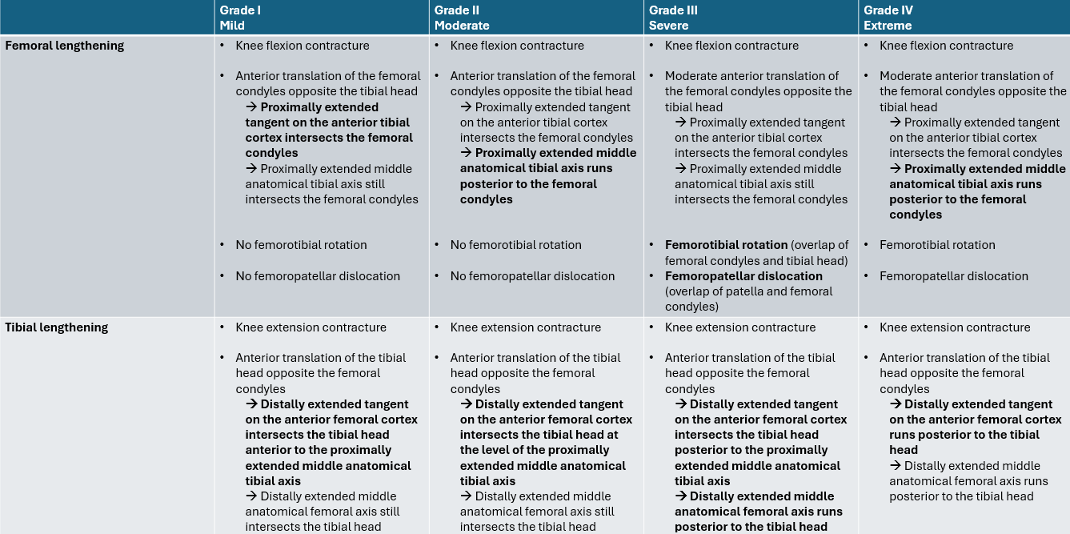German Congress of Orthopaedics and Traumatology (DKOU 2025)
Deutscher Kongress für Orthopädie und Unfallchirurgie 2025 (DKOU 2025)
New classification system of knee joint dislocations and subluxations during lower limb lengthening
2Klinik für Allgemeine Orthopädie und Tumororthopädie, Universitätsklinikum Münster, Münster, Deutschland
Text
Objectives and questions: During lower limb lengthening, subluxations and dislocations of the knee joint are dreaded complications that can lead to severe long-term sequelae. Frequently, this complication is failed to be acknowledged as such, or dismissed as a mere joint contracture and/or valgus malalignment. Early diagnosis and intervention may, however, considerably improve patient outcome.
The aim of this study was to develop a new, comprehensive classification system for knee joint dislocations and subluxations occurring during lower limb lengthening. By creating distinct categories for each degree of dislocation and subluxation, the system seeks to improve diagnosis, treatment planning, and the ability to predict patient outcomes.
Material and methods: This study involved a retrospective review of clinical and radiological data from 21 patients in whom knee joint dislocations (n=6) or subluxations (n=15) were observed during lower limb lengthening performed at out institution between 2014–2024. Lengthening procedures were either performed with an external fixator (n=13) or with an intramedullary lengthening device (n=8). Based on these findings, a classification system was developed, distinguishing between femoral and tibial lengthening. Clinical outcomes were evaluated using the new classification system, with a focus on surgical intervention and long-term sequelae.
Results: We developed a classification system based on four grades of severity of dislocation and subluxation of the knee joint in femoral and tibial lengthening, respectively (Figure 1 [Abb. 1]).
Figure 1: Grades of knee joint dislocation and subluxation, respectively, in femoral lengthening (A) and tibial lengthening (B).
To improve diagnosis of dislocations and subluxations, comprehensive descriptions of the clinical and radiological findings were developed for each grade (Table 1 [Tab. 1]).
Table 1: Clinical and radiological findings of knee joint dislocations and subluxations.
Based on our observations, a treatment protocol was established, including a prognosis for the clinical outcome for each grade (Table 2 [Tab. 2]).
Table 2: Treatment protocol and prognosis for knee joint dislocations and subluxations.
Discussion and conclusions: The newly developed classification system provides a clear and reliable framework for evaluating femoral and tibial knee joint subluxations and dislocations occurring during lower limb lengthening. This system allows for more precise clinical decision-making, aiding in the determination of appropriate treatment strategies. Early and accurate classification may help optimize surgical approach and predict the likelihood of long-term sequelae. Further studies are needed to validate the system and to assess its impact on patient outcomes in clinical practice.




